 by our College Data Analytics Team
by our College Data Analytics TeamTrinity total enrollment is approximately 231 students. 128 are undergraduates and 52 are graduate students.
Male/Female Breakdown of Undergraduates
The full-time Trinity undergraduate population is made up of 47% women, and 53% men.
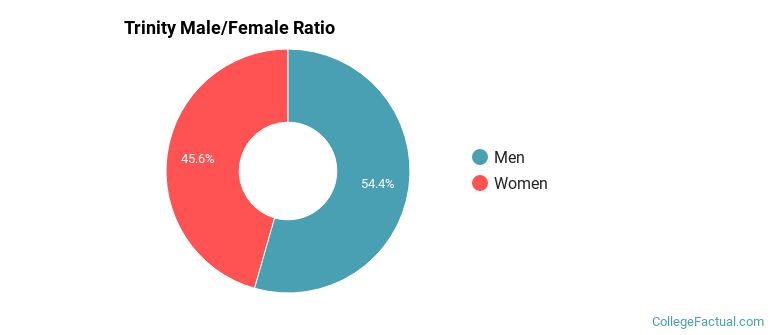
For the gender breakdown for all students, go here.
Trinity Racial/Ethnic Breakdown of Undergraduates

| Race/Ethnicity | Number |
|---|---|
| White | 107 |
| Black or African American | 7 |
| Hispanic | 6 |
| Multi-Ethnic | 6 |
| Asian | 1 |
| Native Hawaiian or Pacific Islander | 0 |
| International | 0 |
| Unknown | 0 |
See racial/ethnic breakdown for all students.
Male/Female Breakdown of Graduate Students
About 23% of full-time grad students are women, and 77% men.

For the gender breakdown for all students, go here.
Trinity Racial-Ethnic Breakdown of Graduate Students
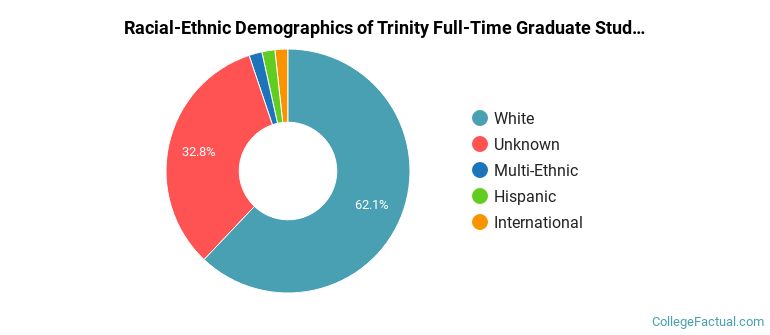
| Race/Ethnicity | Number |
|---|---|
| White | 29 |
| Unknown | 14 |
| Black or African American | 3 |
| Hispanic | 2 |
| International | 2 |
| Multi-Ethnic | 1 |
| Asian | 0 |
| Native Hawaiian or Pacific Islander | 0 |
See racial/ethnic breakdown for all students.
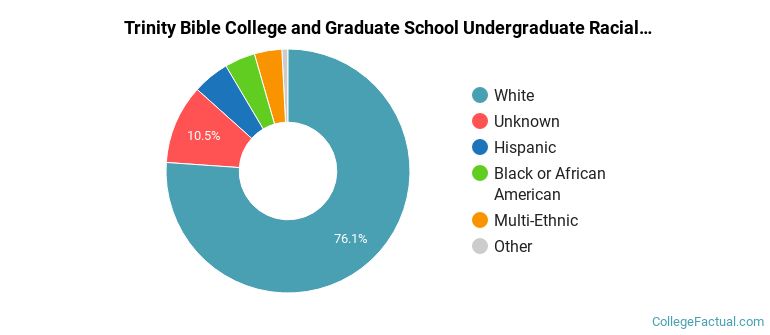
| Race/Ethnicity | Number |
|---|---|
| White | 172 |
| Unknown | 19 |
| Black or African American | 15 |
| Hispanic | 11 |
| Multi-Ethnic | 8 |
| International | 2 |
| Asian | 1 |
| Native Hawaiian or Pacific Islander | 0 |

There are approximately 93 female students and 138 male students at Trinity.
Trinity ranks 507 out of 2,183 when it comes to geographic diversity.
61.11% of Trinity students come from out of state, and 0% come from out of the country.

The undergraduate student body is split among 15 states (may include Washington D.C.). Click on the map for more detail.
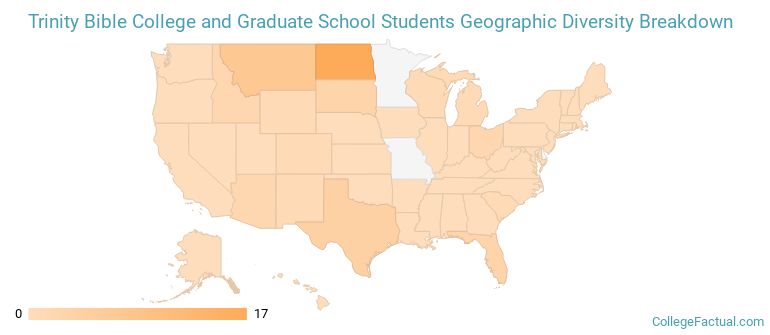
| State | Amount |
|---|---|
| North Dakota | 17 |
| North Dakota | 17 |
| Montana | 7 |
| Texas | 4 |
| Florida | 3 |
A traditional college student is defined as being between the ages of 18-21. At Trinity, 51.06% of students fall into that category, compared to the national average of 60%.
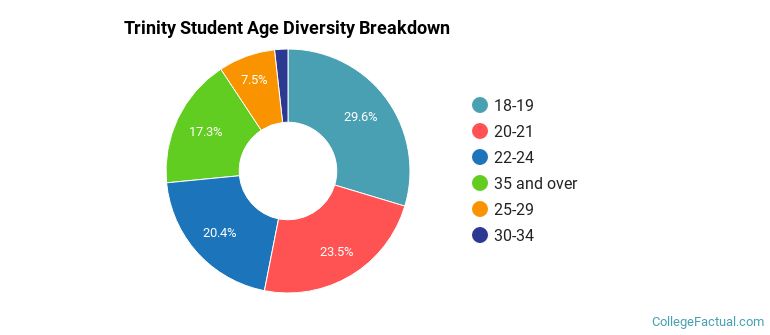
| Student Age Group | Amount |
|---|---|
| 18-19 | 67 |
| 20-21 | 53 |
| 22-24 | 46 |
| 35 and over | 39 |
| 25-29 | 17 |
| 30-34 | 4 |
| Under 18 | 0 |
Footnotes
*The racial-ethnic minorities count is calculated by taking the total number of students and subtracting white students, international students, and students whose race/ethnicity was unknown. This number is then divided by the total number of students at the school to obtain the racial-ethnic minorities percentage.
References
Department of Homeland Security Citizenship and Immigration Services
Find out how College Factual created their Diversity Rankings.